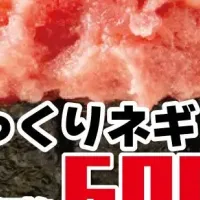
Exploring the Growth of Vacuum Cooling Equipment in the Food Industry Through 2029
The Growth of Vacuum Cooling Equipment in the Food Industry
The global food industry vacuum cooling equipment market is set to experience substantial growth, with an anticipated increase of USD 7.41 million between 2025 and 2029. This forecast is buoyed by a notable CAGR of 3.9%, primarily fueled by a growing emphasis on food quality maintenance and the adoption of advanced technologies such as artificial intelligence (AI).
Understanding Vacuum Cooling Technology
Vacuum cooling is an innovative method used in the food processing sector to quickly reduce the temperature of perishable goods while preserving their quality. This process involves creating a vacuum within a cooling chamber, which lowers the boiling point of water. Consequently, heat is rapidly extracted from the food items, enabling swift cooling without excessive moisture loss. This technology is particularly beneficial for items like fruits, vegetables, and meat products.
Key Market Drivers
Several factors contribute to the expected growth in the vacuum cooling equipment market:
1. Quality Preservation: There's an increasing focus on maintaining the quality of food products, leading to higher adoption rates of vacuum cooling solutions.
2. Efficiency of Screw Vacuum Pumps: The trend towards employing screw vacuum pumps is notable, as these devices not only provide high vacuum levels but also operate without oil, minimizing contamination risk and maintenance costs. They are particularly efficient in processing high-moisture foods and can tolerate various contaminants while utilizing less energy than traditional options.
3. Rising Demand for Ready-to-Eat Products: The growing trend towards convenience foods and prepared meals is driving investment in vacuum cooling technologies. Many food manufacturers and processors recognize the advantages, such as quicker cooling times and extended shelf life, making it essential for their operations.
Market Challenges
Despite the optimistic outlook, the vacuum cooling equipment market faces challenges:
- - Competition from Hydro Coolers: Alternatives such as hydro coolers are gaining traction for their ability to cool products without weight loss and while maintaining flavor and texture. This trend poses competitive pricing and capability pressure on vacuum cooling solutions.
- - Operational Costs: The cost associated with energy consumption and maintenance can deter some companies from adopting vacuum cooling technologies fully. Operational efficiency is critical for businesses, especially in this competitive landscape.
- - Regulatory Compliance: Maintaining consistency in cooling processes is essential for regulatory compliance within the food industry. Businesses must invest in reliable systems to ensure their products meet safety and quality standards.
Market Segmentation
The vacuum cooling equipment market can be segmented based on type, application, and geography:
- - Type: Air-cooled vacuum coolers and water-cooled vacuum coolers.
- - Application: Used extensively in baked products, meat items, fruits, vegetables, and ready-made meals.
- - Geography: The market spans multiple regions, including North America, Europe, Asia-Pacific, South America, and the Middle East and Africa.
Leading Players in the Market
Key players driving market dynamics include:
- - Agrimaint Inc.
- - Atlas Copco AB.
- - Celtic Cooling.
- - DC Norris and Co. Ltd.
- - Focusun Refrigeration.
- - Southern Vacuum Cooling Inc.
- - TRJ Refrigeration Inc.
- - ULVAC Inc.
Conclusion
The future of the vacuum cooling equipment market in the food industry appears bright as it adapts to emerging technologies and consumer demands. The push towards maintaining quality while optimizing production processes will continue to shape market trends. As companies invest in advanced cooling systems to ensure food safety and quality, the integration of AI in monitoring and managing cooling processes will likely emerge as a game changer, setting new standards in food processing efficiency and sustainability. The coming years will see further advancements and innovations, making vacuum cooling technology pivotal in the global food supply chain.
Topics Consumer Products & Retail)










【About Using Articles】
You can freely use the title and article content by linking to the page where the article is posted.
※ Images cannot be used.
【About Links】
Links are free to use.